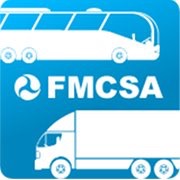The plan is for the public to get its first glimpse of the proposed changes to the hours-of-service regulations on June 7, followed by a short comment period.
According to a monthly report released by the Department of Transportation, the Federal Motor Carrier Safety Administration is hoping to make good on its promise to move quickly on HOS revisions.
The report states agency officials project the notice of proposed rulemaking will publish in the Federal Register on June 7, followed by a 49-day comment period scheduled to conclude on July 26.
The proposed rule is still under review at the White House Office of Management and Budget. The monthly report suggesting a June 7 publication date is not set in stone. Frequently scheduling suggested in monthly reports changes depending on how fast proposed rules and final rules clear OMB.
However, it does show that FMCSA is keeping its foot on the gas and the rule will not languish at OMB.
FMCSA Administrator Ray Martinez has been very direct in repeated comments that he understands the hours-of-service regulations are a problem, and he wanted to move “expeditiously” to get reforms in place.
The report does not shed light on what is in the proposed rule. Only after it is published will the public be able to review the proposed changes.
The proposed changes rulemaking, in part, is in response to a petition from the Owner-Operator Independent Drivers Association seeking changes to the regulations.
The agency initially planned to address:
- Expanding the current 100 air-mile “short-haul” exemption from 12 hours on duty to 14 hours on duty, in order to be consistent with the rules for long-haul truck drivers;
- Extending the current 14-hour on-duty limitation by up to two hours when a truck driver encounters adverse driving conditions;
- Revising the current mandatory 30-minute break for truck drivers after eight hours of continuous driving; and
- Reinstating the option for splitting up the required 10-hour off-duty rest break for drivers operating trucks that are equipped with a sleeper-berth compartment.


